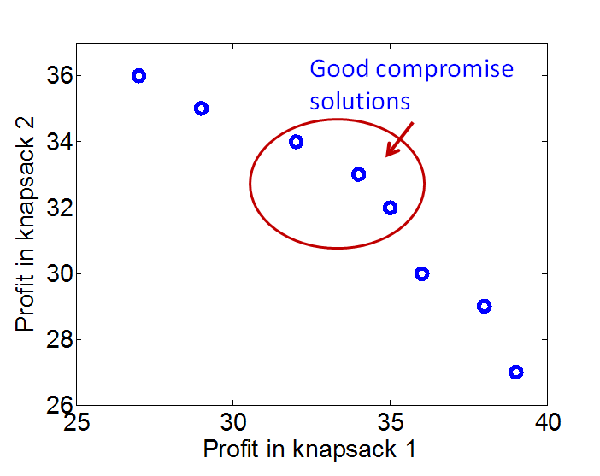 Single knapsack problem:
Single knapsack problem:
| Object number | Knapsack 1, Capacity = 38 | Knapsack 2, Capacity = 35 | |||
| Weight | Profit | Weight | Profit | ||
| 1 | 9 | 2 | 3 | 3 | |
| 2 | 8 | 7 | 4 | 9 | |
| 3 | 2 | 4 | 2 | 1 | |
| 4 | 7 | 5 | 4 | 5 | |
| 5 | 3 | 6 | 9 | 3 | |
| 6 | 6 | 2 | 5 | 8 | |
| 7 | 1 | 7 | 4 | 2 | |
| 8 | 3 | 3 | 8 | 6 | |
| 9 | 9 | 7 | 3 | 1 | |
| 10 | 3 | 1 | 7 | 3 | |
| Profit K1 | Profit K2 | Objects selected |
| 39 | 27 | {2,3,4,5,7,8,9} |
| 38 | 29 | {2,3,4,5,6,7,9} |
| 36 | 30 | {2,3,5,6,7,8,9} |
| 35 | 32 | {2,3,4,6,7,8,9} |
| 34 | 33 | {2,3,4,5,6,8,9} |
| 32 | 34 | {2,4,6,7,8,9,10} |
| 29 | 35 | {1,2,3,4,5,6,8} |
| 27 | 36 | {1,2,4,6,7,8,10} |
